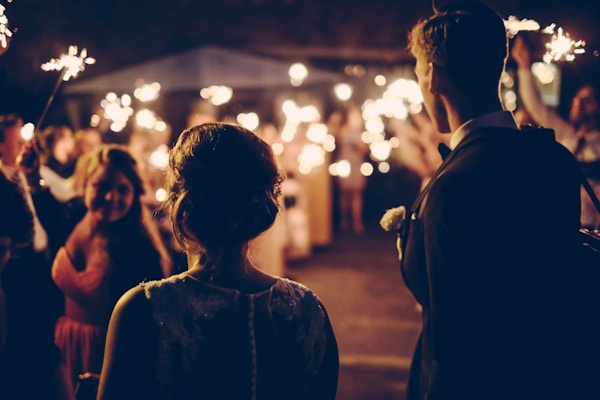Overcoming the Challenges of Working with Metallic Fabrics in Wedding Dress Production
The Allure of Metallic Fabrics in Wedding dresses
Metallic fabrics are a popular choice in the world of bridal fashion, known for their unique shine and glamorous appeal. However, integrating these materials into wedding dress production comes with its own set of challenges. In this article, we will explore the various difficulties designers face when working with metallic fabrics, along with tips on how to triumph over these hurdles.
The Beauty and Appeal of Metallic Fabrics
Metallic fabrics can bring a stunning visual impact to Wedding gowns. Their ability to catch light and shimmer can create a captivating look for brides. Wedding dresses made from these materials often symbolize luxury and elegance. However, their beauty comes at a price, as the manufacturing process can be complicated.
Common Challenges of Working with Metallic Fabrics
There are several challenges designers encounter when working with metallic fabrics in Wedding dresses, including:
1. Fabric Weight and Drape
Metallic fabrics often have a heavier weight compared to traditional bridal materials. This can affect the drape of the gown and lead to discomfort for the bride. It's essential for designers to consider how the fabric will move and flow during the design process. Proper layering techniques and pattern designs can help mitigate these issues.
2. Sewing Difficulties
One of the most significant challenges with metallic fabrics is sewing. The fabric can be slippery, making it hard to handle and cut accurately. Additionally, the metallic fibers may fray easily. It’s crucial to use specialized needles and techniques to prevent damage. Using a walking foot can help with stitching the layers of metallic fabric without shifting.
3. Cost Considerations
Metallic fabrics tend to be more expensive than standard wedding dress materials. This cost factor can impact the overall budget for bridal designers and eventually affect the pricing for brides. It's important for designers to assess material costs early in the production process to price their gowns competitively.
Table: Challenges and Solutions for Designers
| Challenge | Solution |
| Fabric Weight and Drape | Choose appropriate designs that distribute weight evenly |
| Sewing Difficulties | Use specialized needles and a walking foot for easier stitching |
| Cost Considerations | Plan and budget for materials to align with pricing strategies |
Working with Different Types of Metallic Fabrics
Understanding the various metallic fabric options available is crucial for designers. Here’s a breakdown of some popular types:
1. Lamé
Lamé is a fabric woven with metallic threads, usually made from polyester or nylon. It has a lustrous finish, making it a popular choice for glamorous Wedding dresses. However, lamé requires careful handling due to its tendency to fray.
2. Foil-Printed Fabric
Foil fabrics have a metallic coating applied to the surface. While they produce stunning visual effects, they may have a shorter lifespan than other fabrics due to the potential for peeling and cracking.
3. Silk with Metallic Finish
Silk with a metallic finish offers an attractive compromise between luxurious feel and elegant shine. It’s softer than many other metallic fabrics, making it suitable for flowing designs. However, its high cost and delicate nature must be taken into account.

Design Considerations
When creating Wedding dresses with metallic fabrics, several design considerations must be taken into account:
1. Color Coordination
Choosing the right color is essential. Metallic fabrics come in various shades, from gold to silver, bronze, and beyond. Designers must consider the bride's skin tone and the overall theme of the wedding when selecting colors.
2. Embellishments
Incorporating embellishments can enhance the look of metallic fabrics. Beading, embroidery, and lace can create a balanced and sophisticated aesthetic. However, designers should be cautious not to overwhelm the gown with too many embellishments, as the fabric's shine should remain a focal point.
How to Care for Metallic Fabrics
Once production is completed, it's essential to ensure proper care for metallic bridal gowns:
1. Cleaning
Most metallic fabrics require dry cleaning to avoid damage and maintain their shape. Brides should be educated on the importance of following the care instructions provided by the designer.
2. Storage
Correct storage of metallic fabrics is essential to prevent creasing and damage. Gowns should be hung on padded hangers and stored in breathable garment bags. Avoid plastic as it can trap moisture and lead to deterioration.
Popular Metallic Wedding Dress Trends
Metallic Wedding dresses have become increasingly popular, with several trends emerging in recent years:
1. Mixed Materials
Designers are blending metallic fabrics with softer materials like tulle and chiffon for a contrast that enhances the gown's overall visual appeal.
2. Unique Cuts and Silhouettes
As traditional styles evolve, designers are experimenting with unique cuts and silhouettes, allowing the metallic fabric's shine to take center stage in innovative designs.
3. minimalist Styles
A minimalist approach focused on clean lines, metallic fabrics can create a refined look that resonates with modern brides.
Conclusion
Working with metallic fabrics in wedding dress production presents various challenges, from sewing difficulties to cost considerations. However, when approached thoughtfully, these challenges can be overcome. By understanding the strengths and weaknesses of different metallic fabrics and incorporating creative design strategies, bridal designers can create stunning and unique Wedding gowns. For brides, selecting the right metallic fabric can elevate their bridal look, providing a shimmering and elegant style on their special day. Always remember to follow care instructions and storage recommendations to ensure the gown retains its beauty for years to come. Ultimately, the allure of metallic fabrics proves irresistible, making them a timeless choice for bridal fashion enthusiasts.